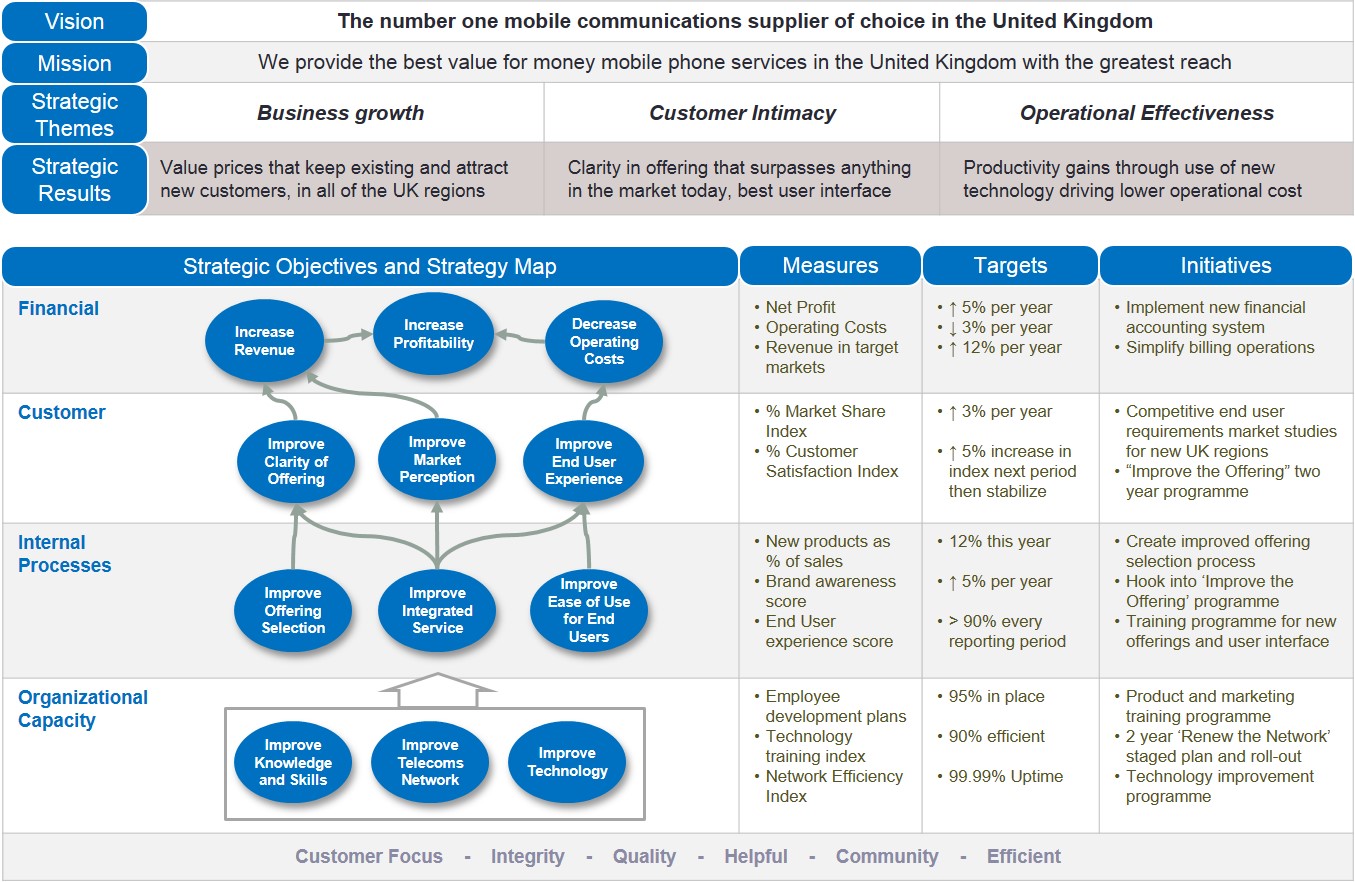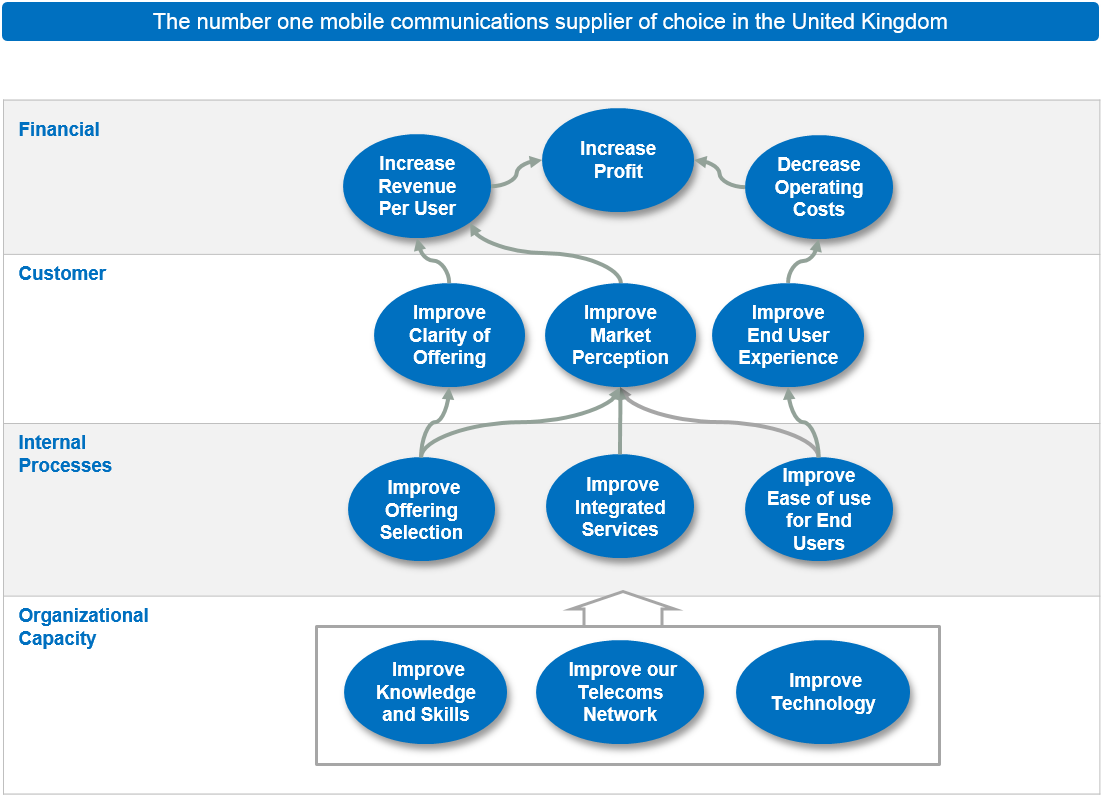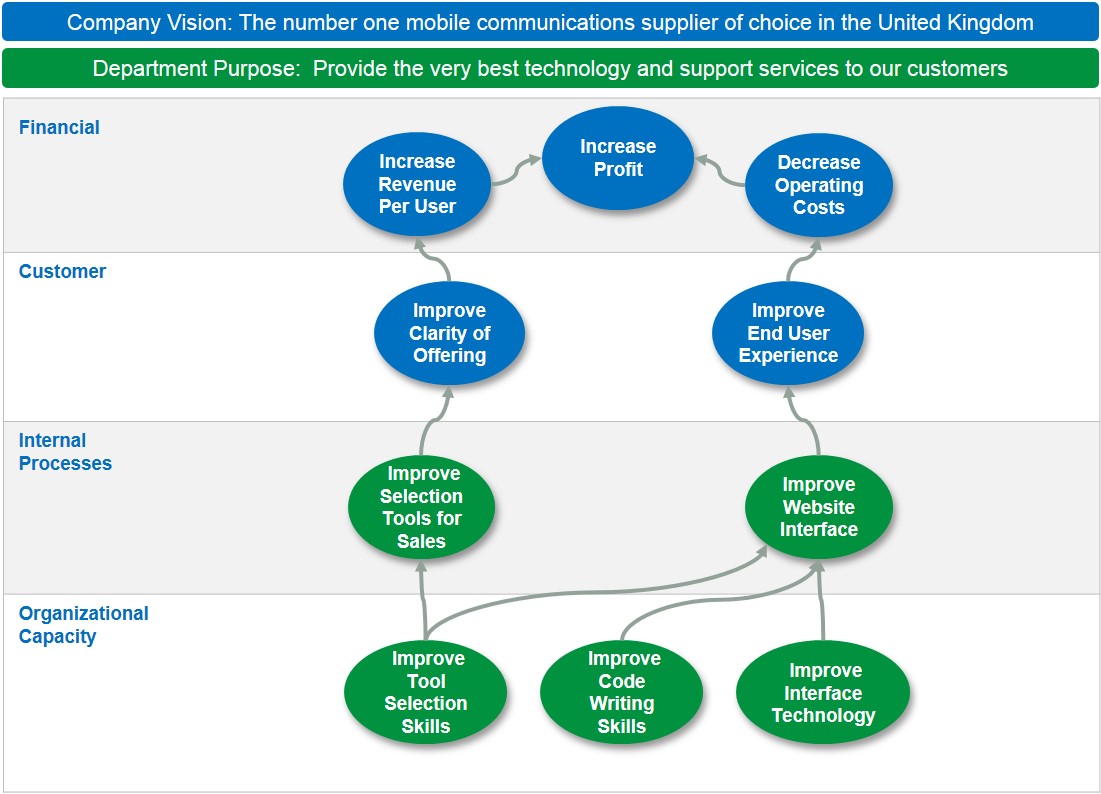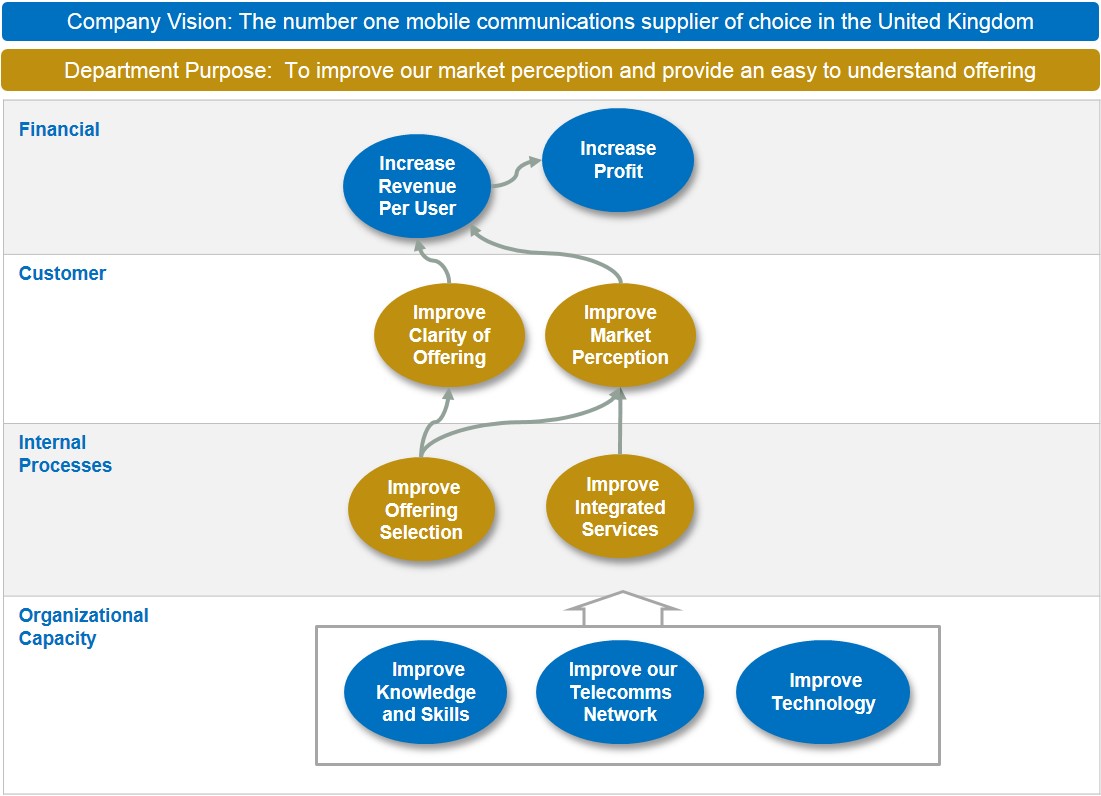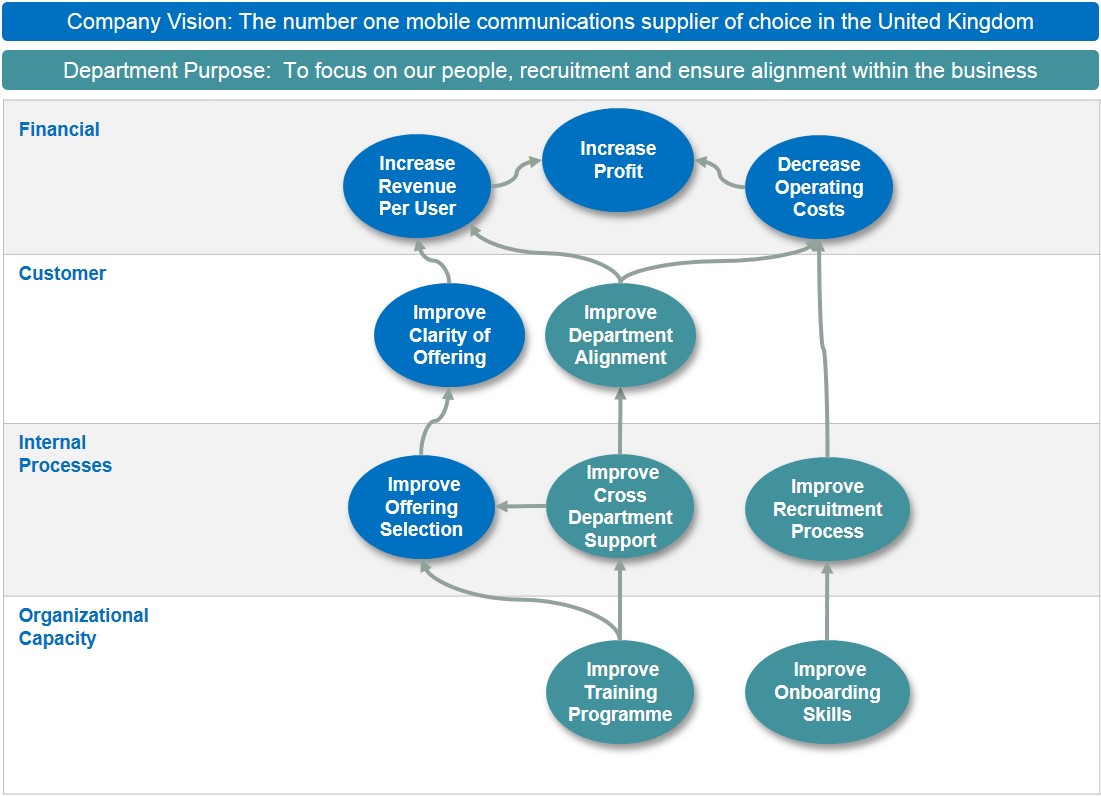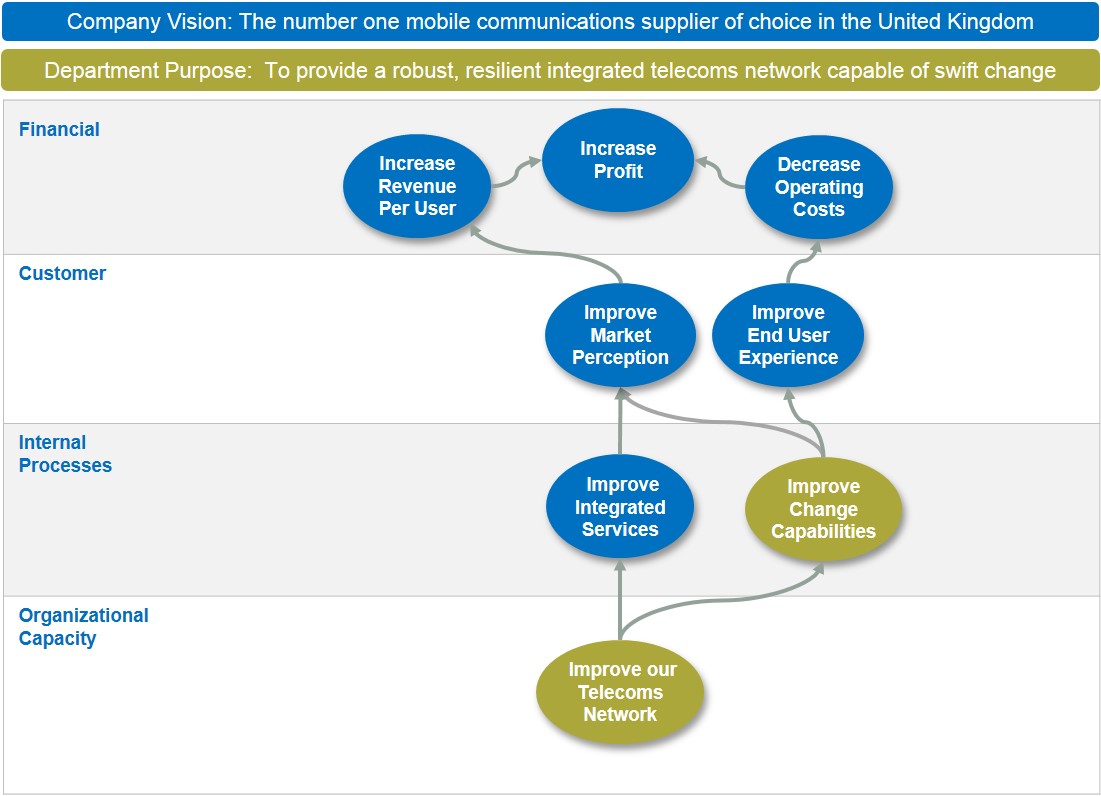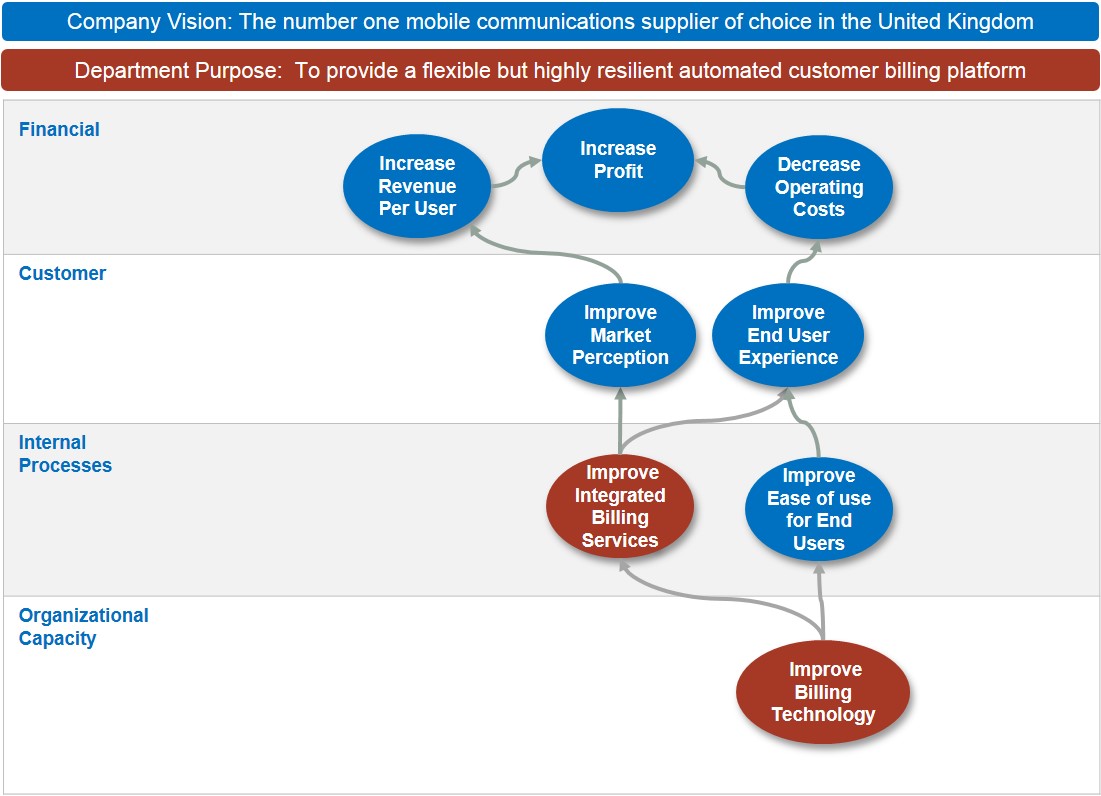You could almost (but not quite) say it was easy to create a company strategy. The executive management team are running the business, they have been picked to drive the business forward and therefore it follows they should be able to create a compelling strategy that everyone understands. The reality however, is that after the top-line strategy is created, the team are given the task to cascade the strategy into the organisation and everyone hopes, through some miracle, it will be successfully implemented.
It is at this point, implementation, where strategies tend to fail. The ‘Strategic Process’ stops at the executive level. Or worse still the top-line set of strategic objectives are forced into the operational departments for interpretation. How many times has a strategic objective like “Improve Customer Satisfaction” been pushed into a service area like the Information Technology department and been reinterpreted to focus on the IT groups ‘internal’ customers? The intent of the objective was to focus on external customers and the result is a focus on internal customers.
When cascading strategic objectives there is a key question that must be asked it is:
“In what way can our department impact on <name the strategic objective>?”
This should lead the department down a route that forces it to examine internal processes and how they can be changed or augmented or even replaced to support the company strategic objective. For example, if the IT group were to look at the company strategic objective “Improve Customer Satisfaction” and ask the question above they might end up looking at ‘improved service delivery time’ or ‘improved service reliability’ or get more specific and look at ‘improved billing accuracy’.
Asking the right question provides a good start, this needs to be supported by providing a good framework/process to ensure strategic objectives are cascaded effectively. The balanced scorecard provides a good cascade tool. It starts with a model called the Integrated Strategy Map. This format should be used at the corporate level and then at every departmental level as well. (Please note there is a PowerPoint template available containing all of the following slides). The Integrated Strategy Map contains all of the elements required for an effective strategy including Vision, Mission, Strategic Themes, Strategic Objectives, Measures, Targets and Initiatives.
This is an example of an Integrated Strategy Map:
For the purpose of this cascading illustration we will just use the Strategy Map part of the Integrated Strategy Map. Cascading Strategic Objectives is the most important part of the process. Measures, Targets and Initiatives don’t always get cascaded, they come into being as a result of the cascaded Strategic Objectives. However, it is important to reiterate: every department will have a full Integrated Strategy Map.
A Company level Strategy Map might look something like this:
If we take this map and give it to the Information Technology department, the first thing they should do is ask of each strategic objective “In what way can our department impact on <name of strategic objective>?” The result might be something like the picture below. Here we can see that all of the company objectives (in blue) in the financial layer have remained in place. These WILL NOT be worked on by the IT department but remain in place as a REFERENCE only. One of the company objectives in the customer layer has been removed and all of the company objectives in the process and capacity layers have been removed, modified or replaced with IT specific objectives (in green). What is abundantly clear however, is the IT group is contributing to the company strategy.
Information Technology Strategy Map:
The following example looks at the Marketing department. Here we see a very different story. The company objectives (in blue and left for reference only) have been left in the Capacity layer and the Financial layer. In this instance the Marketing group require support from the undelaying layers to do their job effectively and so have left these objectives in place (we will see that they get picked up by other areas). The Marketing contribution is in the Customer and Process layers. There is a potential argument that they should improve their skills (in the Capacity layer) to be able to achieve their objectives, but it could be equally assumed that they have the skills already, but they have not been successfully deployed at this point in time.
Marketing Strategy Map
The next example looks at the Human Resources department. Here again we can see that the several of the company objectives (in blue and left for reference only) have been left in place and the Human Resources department has added some supporting objectives. There are a couple of interesting things to note in this example, first the HR department felt they could make no contribution to the Company Objective ‘Improve Market Perception’ and have replaced the whole line with a series of objectives related to an aspect of their departments ‘purpose’ to ensure company alignment. This is valid, the new line will support the financial objectives. Second, they have looked at how they can impact the company objective ‘Decrease Operating Costs’ and focused on another department purpose, that of recruitment. The assumption here is if they improve the recruitment process and hire better skilled people, this will result in an overall decrease in operating costs.
Human Resources Strategy Map
The next two examples follow the same logic. They ask the question “In what way can our department impact on <name the strategic objective>?” and produce a department specific strategy map that includes elements from the company strategy map (for reference only, they will not be worked on by the departments) and the modified/new department specific strategic objectives.
Networks Strategy Map
Billing Strategy Map:
It should be possible, in theory, to combine all of the strategy maps to create one master map that contains all of the interrelationships. In practice, this is often very difficult simply because there are too many elements and too little space. However, the principle still holds true.
For more information on the Integrated Strategy Map take a look at the Intrafocus Insight: Integrated Strategy Maps. To see this in the context of the full process go to the Nine Steps to Success.

